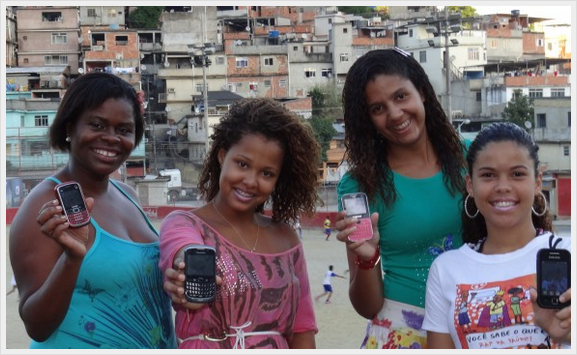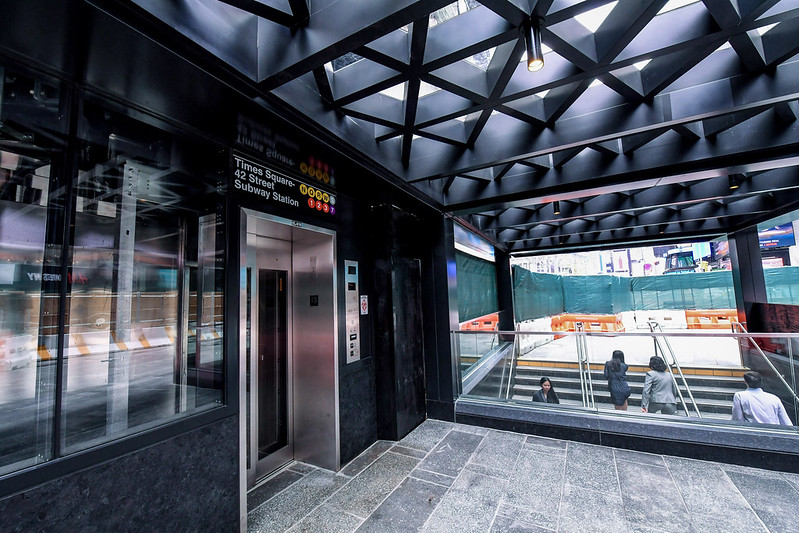
Photo: cities-safer-for-women
How can we make cities safer for women?
15 August 2013
by Richard Forster
Sexual harassment and violence in public spaces against women is still an everyday occurrence in cities around the world. William Thorpe reports how with new technology, data collection and UN support, cities are beginning to tackle this problem.
Following the brutal gang rape on a Delhi bus in December last year that left a young female student dead, there was outrage not only in Delhi but in cities across the world. Responses in India included nighttime vigils and protests, a fast tracked commission to overhaul antiquated laws, the galvanising of self-styled all-women vigilante groups, and the launch of new inventions to ward off attackers.
The Society Harnessing Equipment, or SHE, a form of anti-rape underwear, was one such creation. “We couldn’t sleep the night after we came to know about this [the bus gang rape in Delhi],” explains Niladri Basubal, a student from Chennai, India, who worked on the invention with two other students. “The very next morning we met up after college hours for a brain-storming session. This is when we came up with the idea of a quick, technological solution to this problem.”
Worn as a bra, the SHE device uses technology that detects pressure when applied to the victim’s body, and sends an SMS message to the nearest police station and the victim’s guardian. An electric shock is also discharged to deter the attacker.
“Our innovation is to bring a simple solution to a serious problem existing in our society,” adds Basubal.
While the device could provide some protection for women, some argue that this is placing too much of an onus on women, when society at large and those responsible for public safety need to take charge. Technology is not in itself going to eradicate criminal and anti-social behaviour without strong community and government leadership.
Data collection
The UN is one body, which has looked to raise the importance of the issue at city government level. Since 2010, UN Women, along with UN-Habitat, has been working with local governments in five cities including Delhi, Cairo (Egypt); Quito, (Ecuador); Kigali (Rwanda); and Port Moresby in Papua New Guinea to build strategic and knowledge-based interventions as part of the Safe Cities Free of Violence against Women and Girls Global Programme.

“In spite of the fact that there had been about 40 years of the women’s movement and actions by local governments we did not find a single case of what actually works in making cities safer for women and girls,” admits Anastasia Posadskaya-Vanderbeck, Global Manager of the UN Women Safer Cities Global Initiative. “And rapes are happening everyday, not only in Delhi, but all over the world. In a poll taken last year in London, 41 percent of women aged 18 to 34 said that had been sexually harassed on the streets. In Tokyo, nearly 64 percent of the women in their 20s and 30s said they were groped while commuting. In New York, Paris and Montreal we see similar responses. It is clear that across the world, the Safer Cities initiative should be an integral partof a smart and sustainable city profile.”
As part of the initiative, studies were undertaken in all five cities. These included a heavy emphasis on local contexts and perspectives, to show concrete issues of safety, sexual harassment and violence in each city, which could be translated into comprehensive strategies for change. “It is often helpful to take a very local perspective as safety issues are unlikely to be the same across a city,” says Cecilia Andersson, Safer Cities Programme, UN-Habitat. “For example, a women’s safety audit, where women and girls acts as experts in their own safety, should be recognised and widely utilised by local authorities in urban planning.”
Some positive reaction to the initial study was Quito’s decision to amend its local city ordinance laws from a focus on domestic violence to one that addressed violence against women in public spaces. In Cairo, women mapped places in their local communities where they felt most unsafe using the women’s safety audit, which is now being formalised by the Egyptian Ministry of Housing and Urban Development.
In Port Moresby, local markets, which are vital public spaces for economic activity in the city, had become so unsafe that women vendors were leaving. Local women worked with the city government to change bylaws for the markets to include articles addressing women’s safety. Women are now returning to the market and the government is also implementing infrastructure improvements. A key starting point is the importance of data combined with a locally owned approach.
“To have real data is important and a smart government is one that has real and meaningful data and the political will to act on it,” says Posadskaya-Vanderbeck.
The political will of local governments in India has increased extensively since the attack in Delhi. Diya Nanda, Programme Assistant for Delhi Safe Cities Initiative, UN Women, recalls that while the Delhi government before the attacks was participative in discussions, there has since been a step-up in the levels of involvement.

“In the meeting we had this year in March there was a completely different level in the seniority of officials attending, including the way in which they were prepared,” she says. “They came in straight away to discuss what they had already done. I’d say the concrete steps the government is taking are much stronger this year. The issue has become a priority.”
To further advance this work across the world’s cities, UN Women, UN-Habitat and UNICEF, have launched the Safe and Sustainable Cities for All Joint Programme with Greater Beirut, Lebanon; Dushanbe, Tajikistan; Metro Manila, Philippines; Marrakesh, Morocco; Nairobi, Kenya; Rio de Janeiro, Brazil; San Jose, Costa Rica; and Tegucigalpa, Honduras.
Technology in the favelas
While data collection, surveys and mapping can be used with little or no technology, in Rio, the use of minimal technology is helping women in favelas feel safer. Joana Chagas, Programme Manager at UN Women in Rio says that most favelas in the city have historically lacked basic public safety and urban planning services by the state with organised crime governing such areas in the 1970s and 1980s.
Accustomed to self-sufficiency and now, with relatively high Internet availability thanks to government supported LAN Houses (internet cafes), 10 low-income communities in Rio have used basic mobile phone technology to map safety risks in their neighbourhoods. Trained women and adolescent girls used their phones to map faulty infrastructure or services, obscured walking routes and areas with a lack of lighting. This enabled them to establish action plans to prevent and respond to violence.
Since the first survey was undertaken and made available on the web, a second generation app has been launched, coinciding with International Women’s Day in March, which increases the level of interactivity between users.
“My neighbour entered the website and found where the closest Specialised Police Station for Women was, and filed a formal complaint against her husband who beat her,” says Kelly Gregorio da Silva, one of the app users. “She did not divorce him but he thinks twice before raising a hand on her as he had to explain himself to the police. She had the courage to file a complaint against him and she knew where to go.”
The app uses geo-referenced data to facilitate access to the network of service providers for women and girls, and allows them to evaluate those services. Support networks after an attack are seen as just as important as the preventative measures.
“Every girl, every woman has the right to live without violence,” says Luciana Phebo, Coordinator for UNICEF in Rio de Janeiro. “But when violence occurs, we have to ensure that women find the necessary support and services to deal with the situation and protect themselves so that it doesn’t happen again.”
Private sector assistance
But technology only works in the hands of an informed user: if someone cannot or does not know how to use the technology then it will make no difference. According to Posadskaya-Vanderbeck, such thinking dominated the UN’s early exchanges with Microsoft, which has become UN Women’s first private sector partner in this area.
“The first initial questions we asked Microsoft were: what do we know about the accessibility to technology from the poorest women and girls? If they have mobile phones, smart or not, is it safe to use them in public and after dark? How can they afford to buy these phones and to pay monthly fees? First of all we need to learn from women and girls themselves about their realities and their perspectives on how to use technology to improve their safety.”
The first step of the new partnership with Microsoft in India, Rio and Marrakesh will be to investigate the potential use of mobile phones for prevention, documentation, and response to violence against women and girls in cities.
These enquiries are important, says Posadskaya-Vanderbeck, as one project previously implemented in Delhi was based on mobile phones, yet during the review it was discovered that the phones were either stolen or taken by male members of their family.

Programme Manager, Public-Private Partnerships, Microsoft
“As part of our Public-Private Partnership with UN Women, Microsoft saw the opportunity to leverage technology solutions to end violence against women and this includes strengthening legal frameworks, reinforcing preventative action, and efforts to help law enforcement to stop perpetrators and protect and support victims,” explains Alethea Lodge-Clarke, Programme Manager, Public-Private Partnerships, Microsoft.
Microsoft has been screening 10 examples of existing technology with further plans in mind to leverage and customise solutions, based on specific needs and local contexts. “We plan to jointly announce the launch of the beta versions of two apps in time for the International Day for the Elimination of Violence Against Women, in November,” adds Lodge-Clarke. “One for developed markets and another for emerging markets.”
Make safety part of planning
While the focus of attention in the last six months has been on India and Brazil, UN Women, UN-Habitat and UNICEF agree that sexual harassment and violence against women and girls is a problem in every city. One reason for the widespread nature of the issue, says Andersson from UN-Habitat, is that often cities don’t see women and girls’ safety as a key component in the overall safety plans for cities (see box).
“While the immediate reaction of many has been to demand better policing and harsher punishments for the accused, we know that this is not a sustainable response to end violence against women and girls,” comments Andersson. “We need to address the issue of policing and legislation as well as the role that families and communities can play to stop such violence. Our cities need to be better designed, planned, governed, and managed to make them more inclusive and safe.”
Women’s and girl’s safety is at a critical juncture. City leaders need to understand and raise awareness of how sexual harassment and violence effect not only the social cohesion and wellbeing of residents but also the economics of a city, as women and girls have to adjust their lives as they chose the route from home to school or work, ride in public transport, or rush home before it’s dark.
“The issue needs to be addressed by decision makers,” says Posadskaya-Vanderbeck. “If it is addressed properly the benefits of social inclusion, economic vitality, health, smart urban planning and the physical environment would be so much more advanced. Safer cities for women and girls are better cities for all. It is an opportunity which everyone has to look at.”
—
Fear of crime and violence
• Reduces women’s mobility in the city
• Contributes to social isolation
• Prevents full participation in city life
• Impacts on how members of the community interact
• Inhibits the creation of communities and a city’s economic development
Where cities can start
• Urban planning and design of public spaces
• Provision and management of public infrastructure and services
• Public transport
• Policing
• Legislation and justice to support victims
• Education
• Civic awareness and participation











